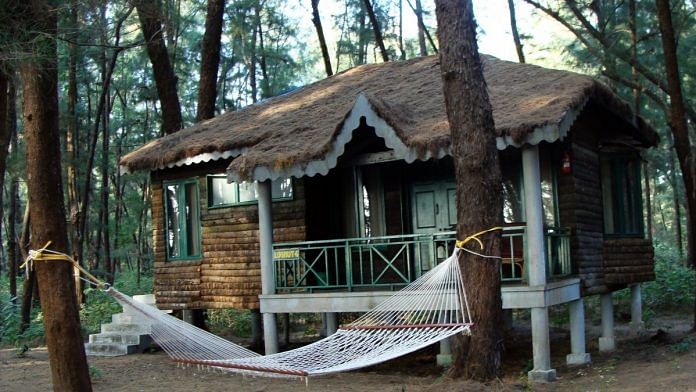New Delhi: The NITI Aayog has highlighted the need for more simplified and inclusive regulatory interventions for homestays in India amid a domestic tourism boom.
A report titled ‘Rethinking Homestays: Navigating Policy Pathways’, launched Friday by the public policy think tank, underlines a lack of uniform regulations for homestays across states. For instance, while Uttarakhand, Uttar Pradesh and Kerala follow five to six steps for the registration of a homestay, Goa follows only three.
NITI Aayog has suggested adopting the best practices from across states to create a comprehensive model policy framework that would simplify processes, encourage wider participation, and promote sustainable tourism growth. It has also recommended creating a centralised digital portal for homestay registration, renewals and compliance management, which may allow operators to submit documents, track applications, and receive policy updates and renewal reminders.
India’s domestic tourism industry has been booming after recovering from the COVID-19 pandemic, and so is the homestay market, which is projected to grow at a Compound Annual Growth Rate of 11 percent between 2024 and 2031—the highest globally—according to the Homestay Market Report 2025 by Cognitive Market Research, an industry research and consulting firm.
Data from the World Travel and Tourism Council shows that India’s domestic tourist spending has gone up by 28 percent from 2019 to Rs 16 lakh crore in 2023-24, and is projected to reach Rs 28.7 lakh crore by 2033-34.
In 2023-24, spending by international tourists surpassed pre-pandemic level (2019) of Rs 2.75 lakh crore to reach Rs 2.85 lakh crore. It is further projected to hit Rs 4.07 lakh crore by 2033-34.
The NITI Aayog report says that the regulatory framework for homestays also differs in structure and intent. For example, Uttarakhand issues registration certificates for homestays with two-year validity, while Kerala and Uttar Pradesh issue certificates with three-year validity. For Goa, the validity varies between one and five years, depending on the homestay operator.
“Operators also often find themselves navigating a labyrinth of registration requirements—visiting multiple offices, submitting an extensive array of documents, and enduring lengthy approval processes that can span from a period of two to six months,” the report reads, adding that this complex regulatory landscape not only creates confusion, but also severely delays the issuance of registration certificates.
While states offer fiscal incentives to homestay operators, very few receive them due to lack of awareness. A ground survey conducted for the NITI Aayog found 70 percent of respondents (homestay operators) reporting either a lack of awareness regarding available incentives or difficulty in accessing them.
The report also lays emphasis on targeted marketing campaigns by state governments to highlight unique offerings, while recommending tier-based incentives schemes, whereby areas with immediate tourism potential (tier-1) receive top priority for development, while secondary areas (tier-2) with long-term potential receive phased incentives and marketing support.
Also Read: Navigating Trump’s tariffs is no child’s play. Indian toymakers are losing out on orders, enquiries
Community-based tourism
The report underlines the shifting preferences among travellers driven by social media that make homestays a more attractive option.
“In India, 87 percent of travellers are interested in extended trips to experience new destinations fully. The rise of ‘workcations’ and digital nomadism has increased demand for affordable, long-term accommodations, further boosting the homestay segment,” the report says. “Additionally, offbeat and rural tourism has gained popularity, with 69 percent of travellers preferring lesser-known destinations over mainstream tourist spots.”
Owing to the steep rise in tourists, the tourism ministry expects a shortfall of 2 lakh hotel rooms, which makes alternative accommodations like homestays critical in filling that gap.
Homestays act as a catalyst for community-based tourism as many are located in remote and off-beat locations. The families in small towns and villages can foster collaboration to host guests, generate shared income and create sustainable livelihoods.
“Unlike traditional hospitality models, these small-scale units generate revenue distributed across a broader population, ensuring more inclusive economic benefits,” the report adds.
(Edited by Mannat Chugh)
Also Read: ‘Regulatory, geopolitical issues’ affected 2,458 flights in India in 2025—Modi govt to Parliament




